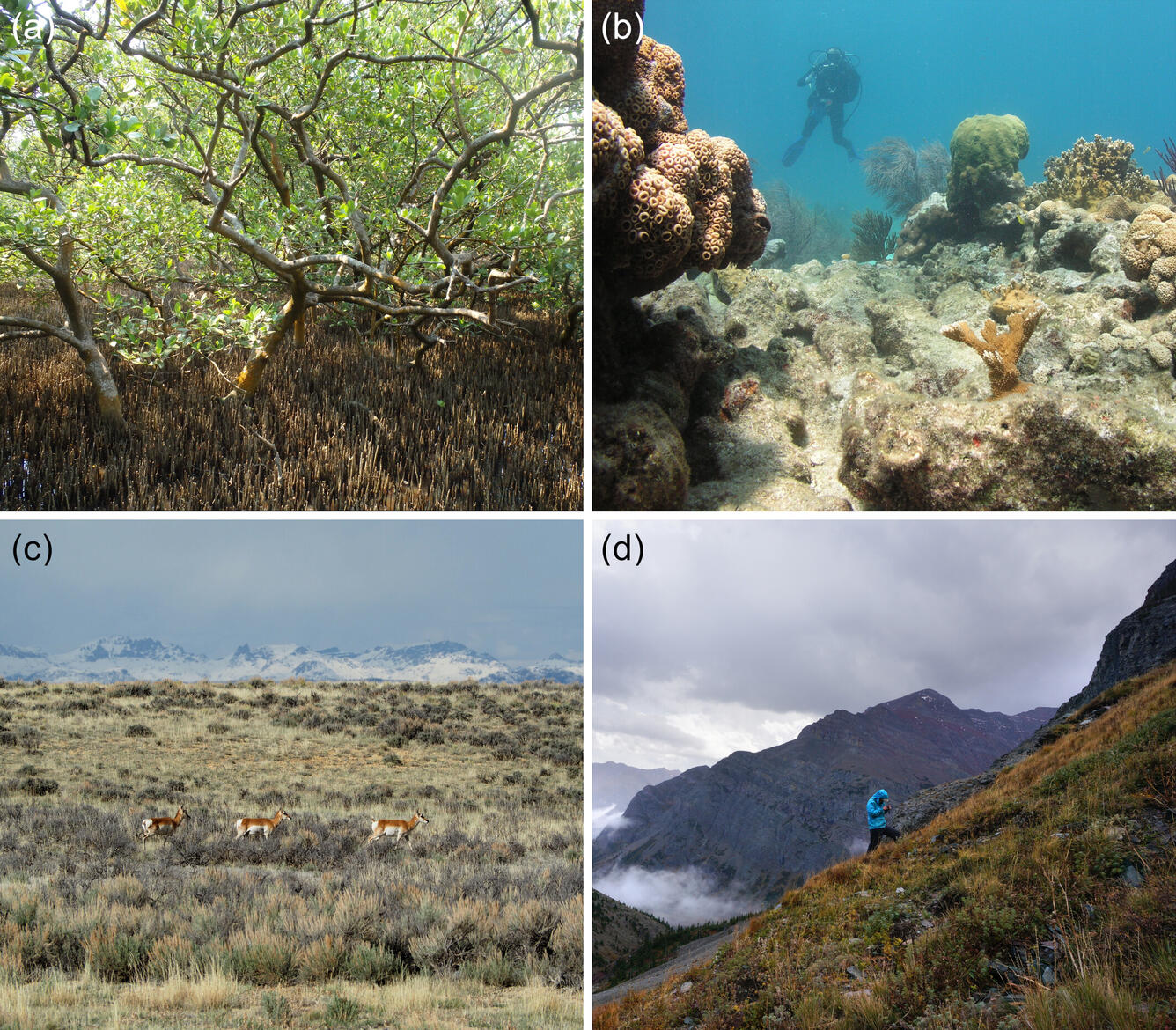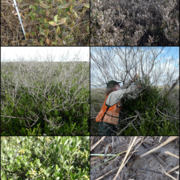Ecological Thresholds, Abiotic Stress, and Climate Change: A Conceptual Framework
As climate change accelerates, the risk of sudden, large-scale shifts in ecosystems is growing. A new USGS study examines the mechanisms behind these abrupt ecological transformations—known as threshold responses—and offers a roadmap for predicting where and when they might occur.
Published in the journal Ecosphere, the research introduces a conceptual framework that links climate-driven changes, abiotic stress (such as extreme temperatures, drought, or salinity), and the vulnerability of ecosystems to transformation. The authors argue that ecosystems already teetering near their physiological limits are especially prone to sudden change, providing examples of this climate-driven threshold behavior from four high-stress environments: coastal wetlands, coral reefs, drylands, and alpine ecosystems.
Ecosystems don’t always respond gradually to environmental change. In some cases, a relatively minor shift—like a slight rise in temperature or a modest drop in soil moisture—can push a system past its breaking point.
The framework zeroes in on ecosystems where foundation species—organisms that create and define habitat, like corals, seagrasses, or kelp—play a central role. These species often live close to the edge of their environmental tolerance. When conditions tip even slightly beyond that edge, it can result in rapid, widespread shifts in structure, function, and biodiversity. In addition, the study emphasized the growing threat of compound and cascading effects to global ecosystems, leading to species loss and disturbance.
For example, coral reefs and coastal marshes, both highly stressed and dominated by a few foundation species, are vulnerable to collapse if temperatures or sea levels rise too far. Conversely, the study suggests that if stress is alleviated—for instance, with warming winters or increasing freshwater inputs— some foundation plant species could thrive and even expand into areas once considered inhospitable. For example, warming winters can allow conifers to expand into alpine meadows, and fewer extreme cold events can allow mangrove forests to expand into salt marshes.
The researchers emphasize that understanding where ecological thresholds lie is crucial for conservation and management. By identifying which systems are close to tipping points, managers can better prioritize efforts to either prevent collapse or support recovery.
Read the study, Ecological thresholds and transformations due to climate change: The role of abiotic stress, in Ecosphere.




